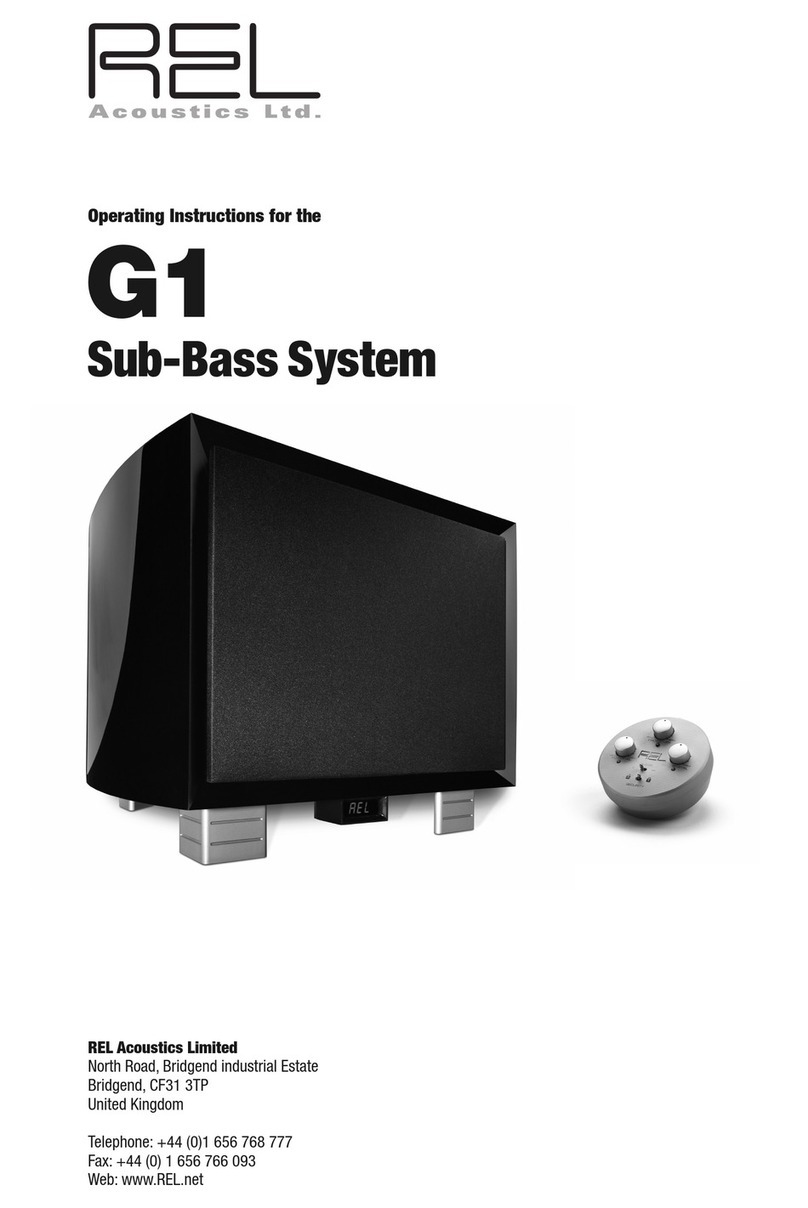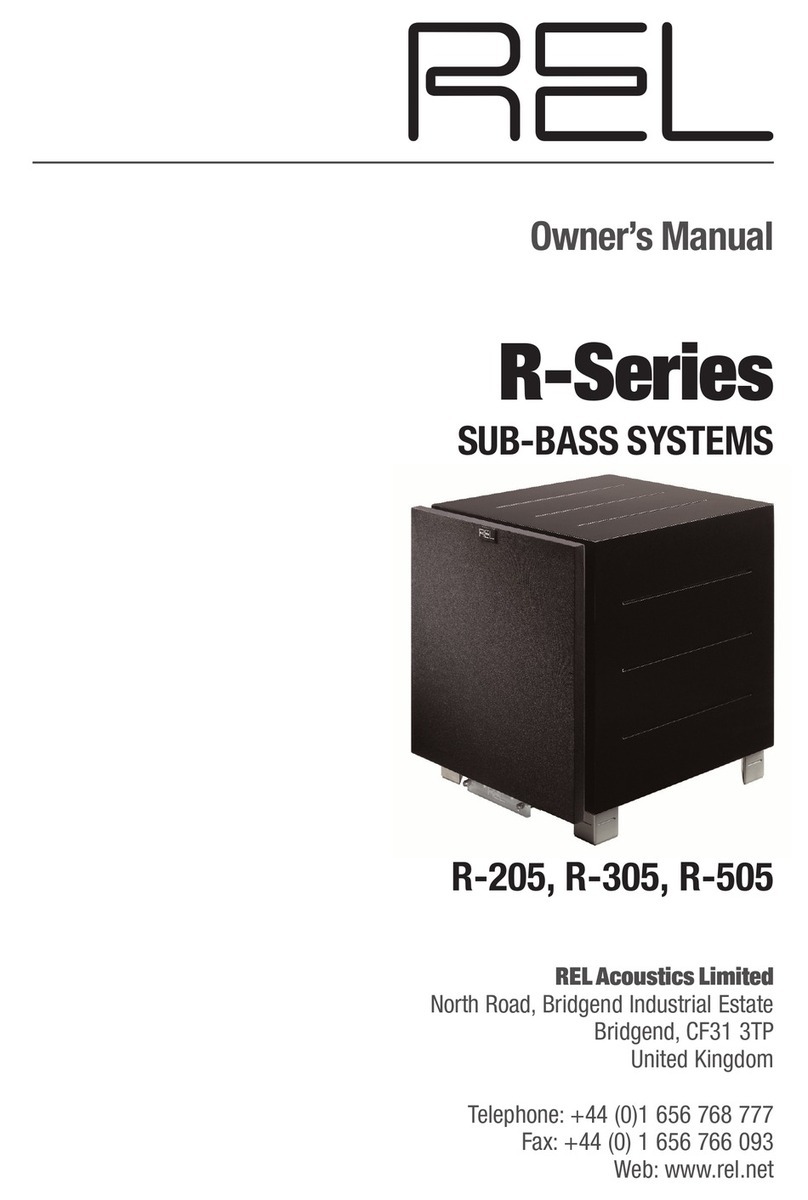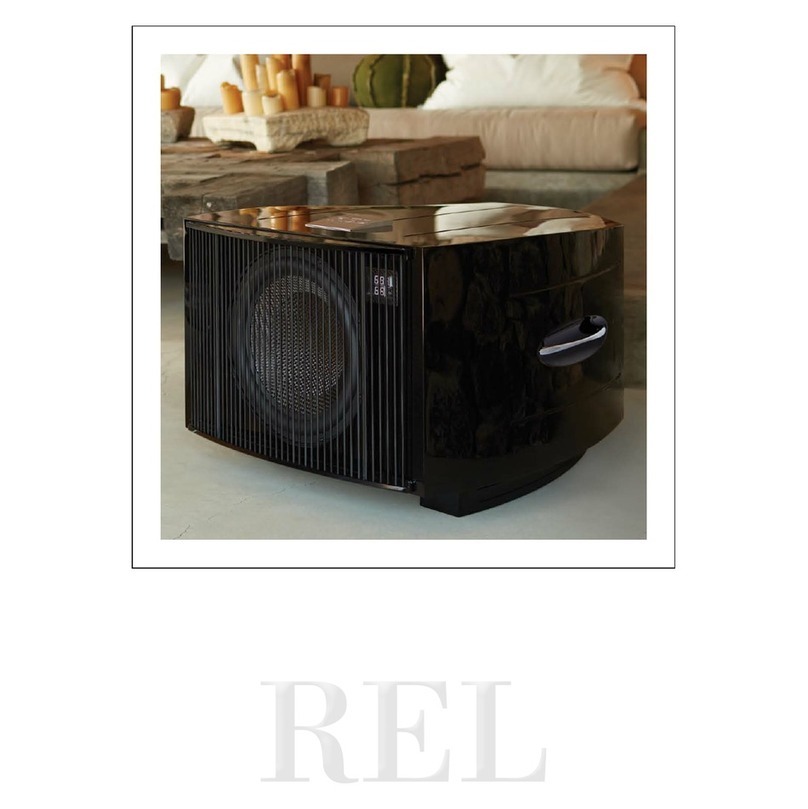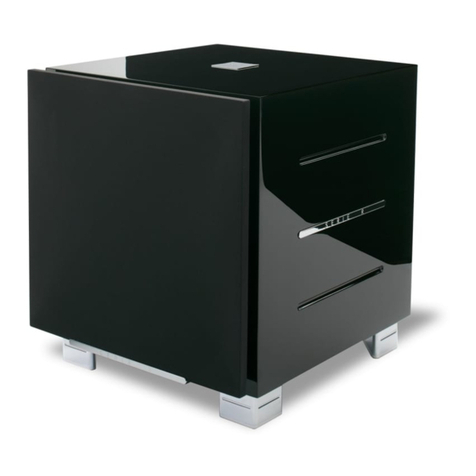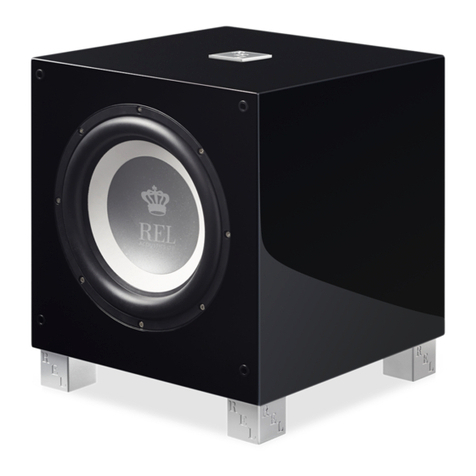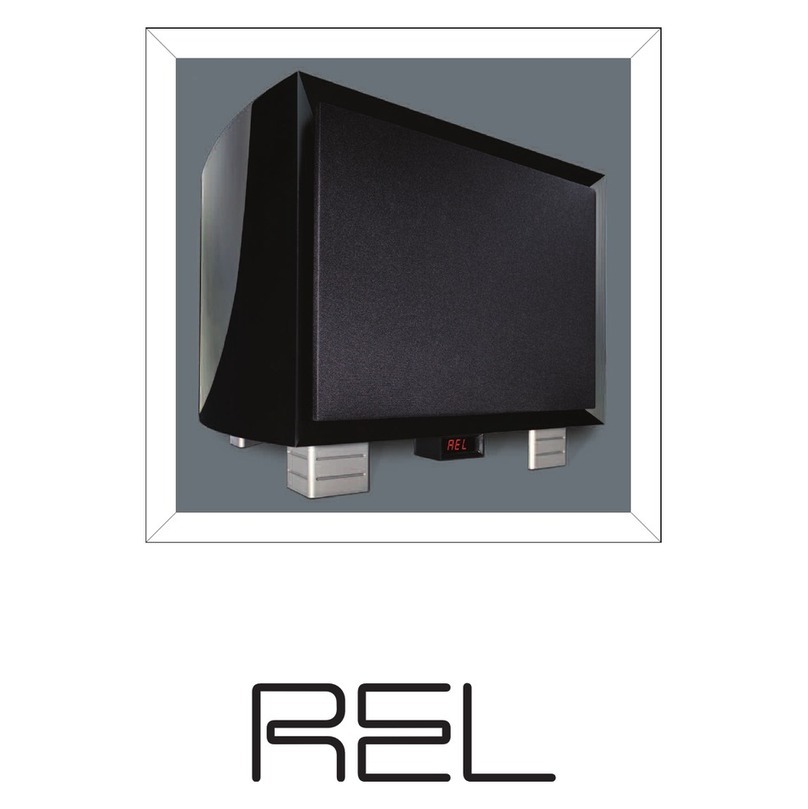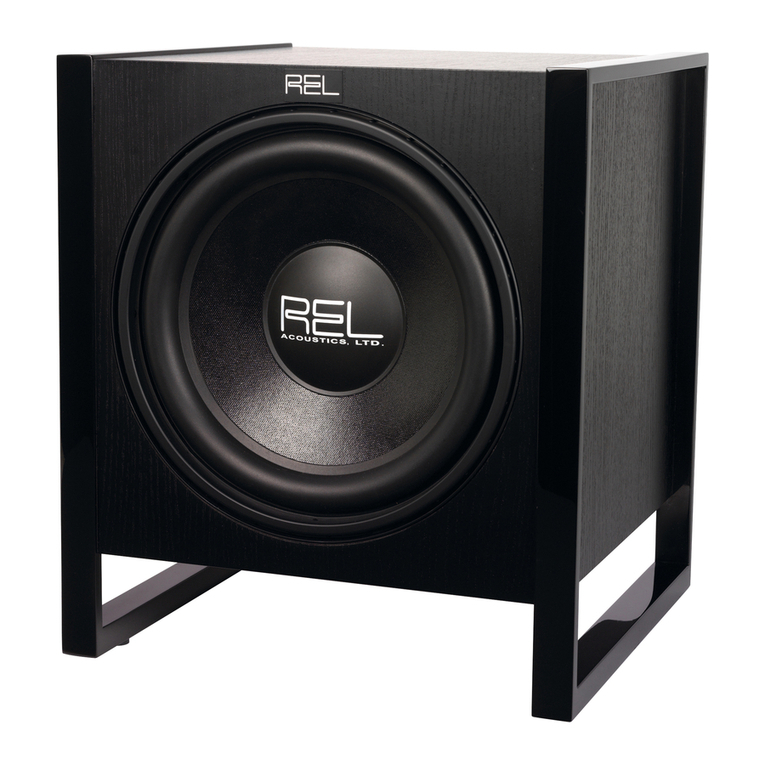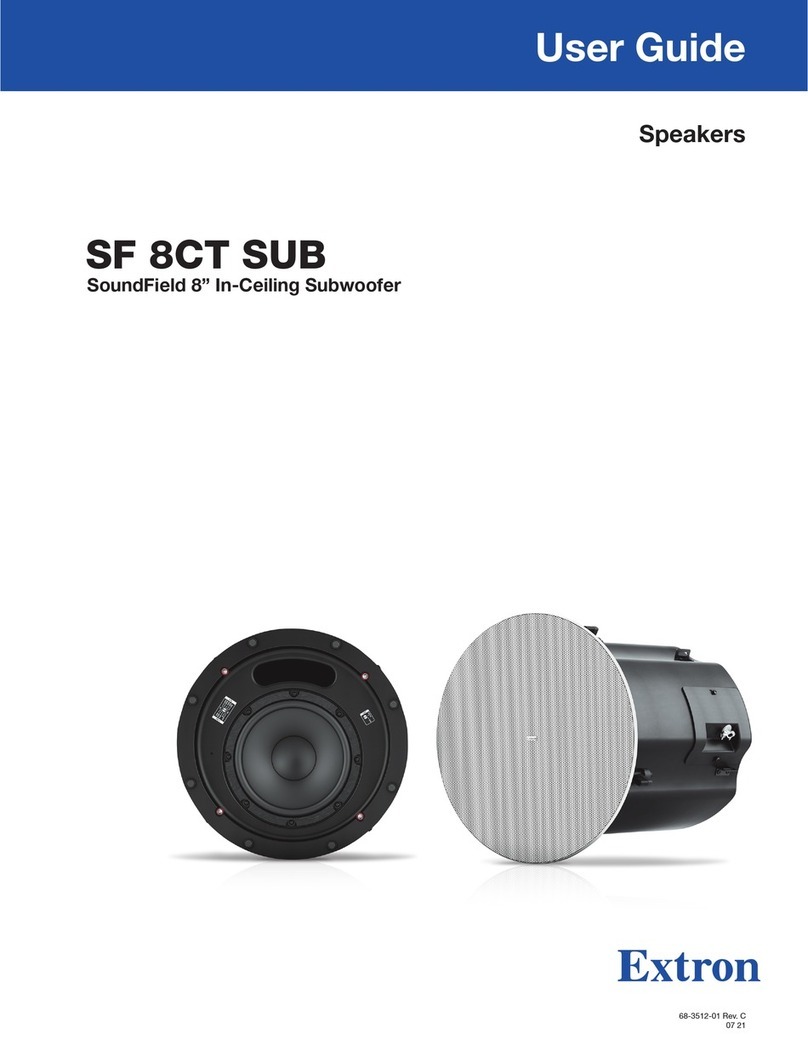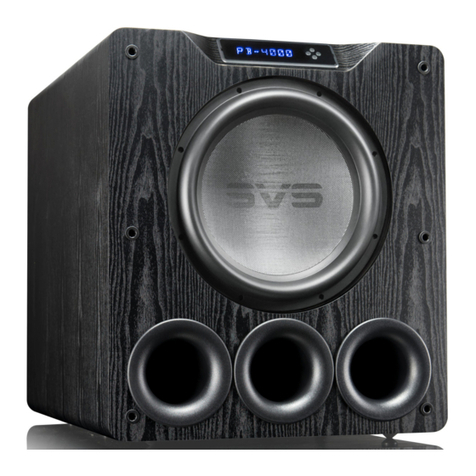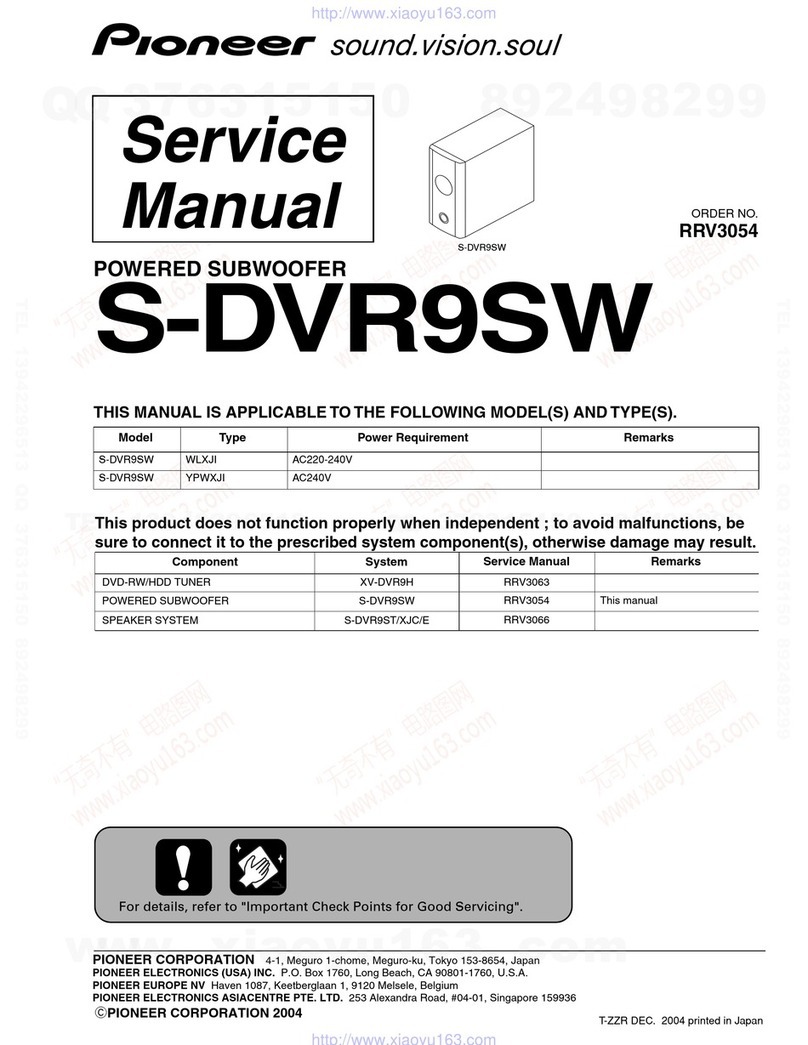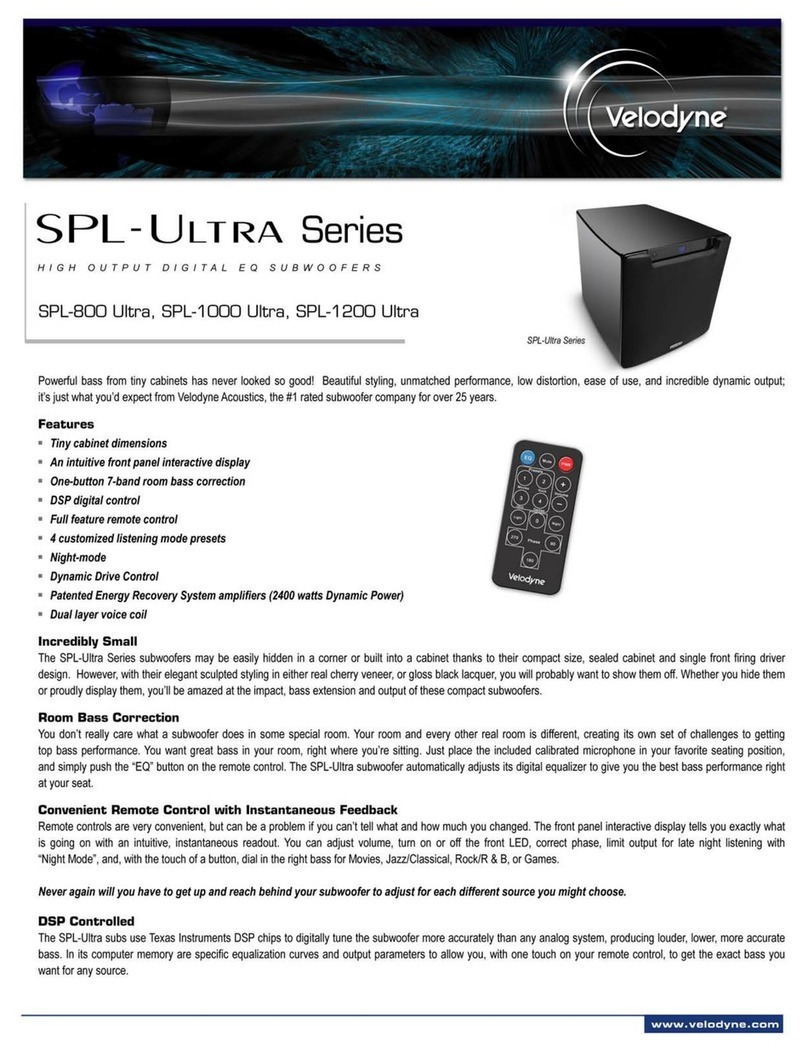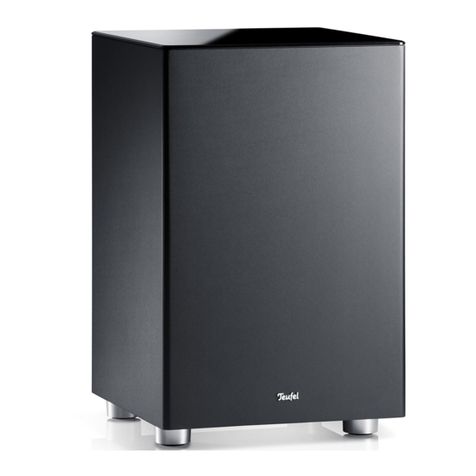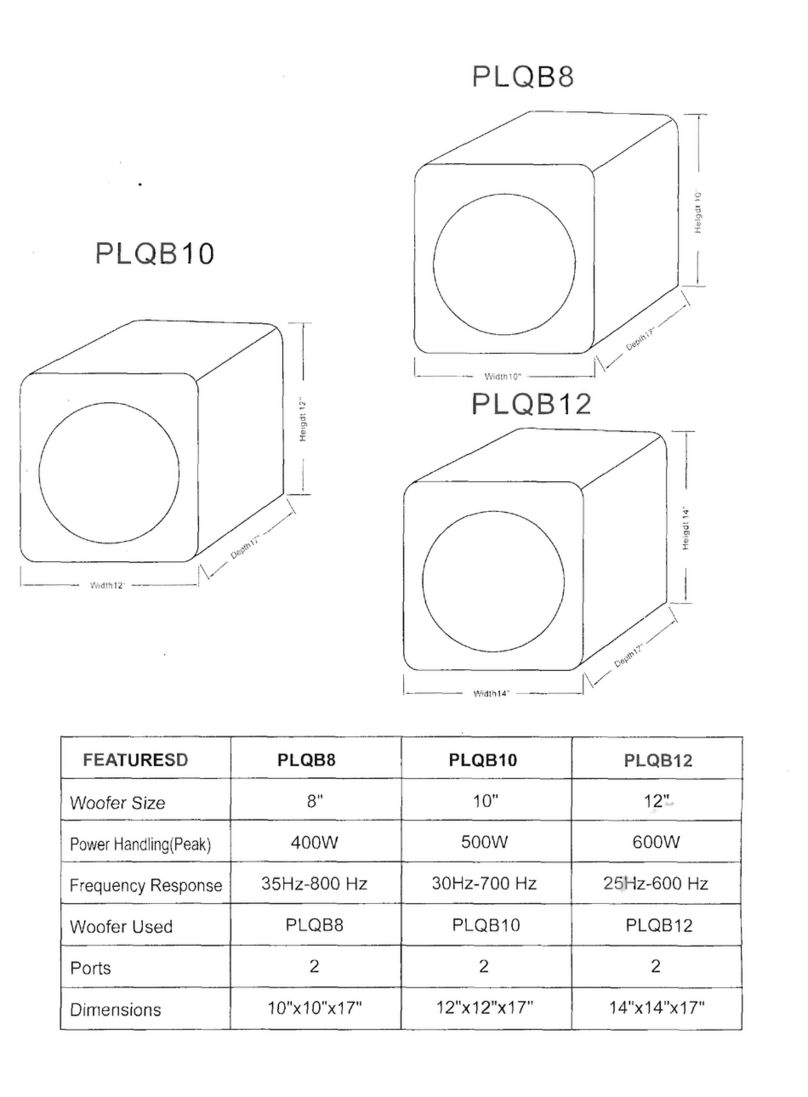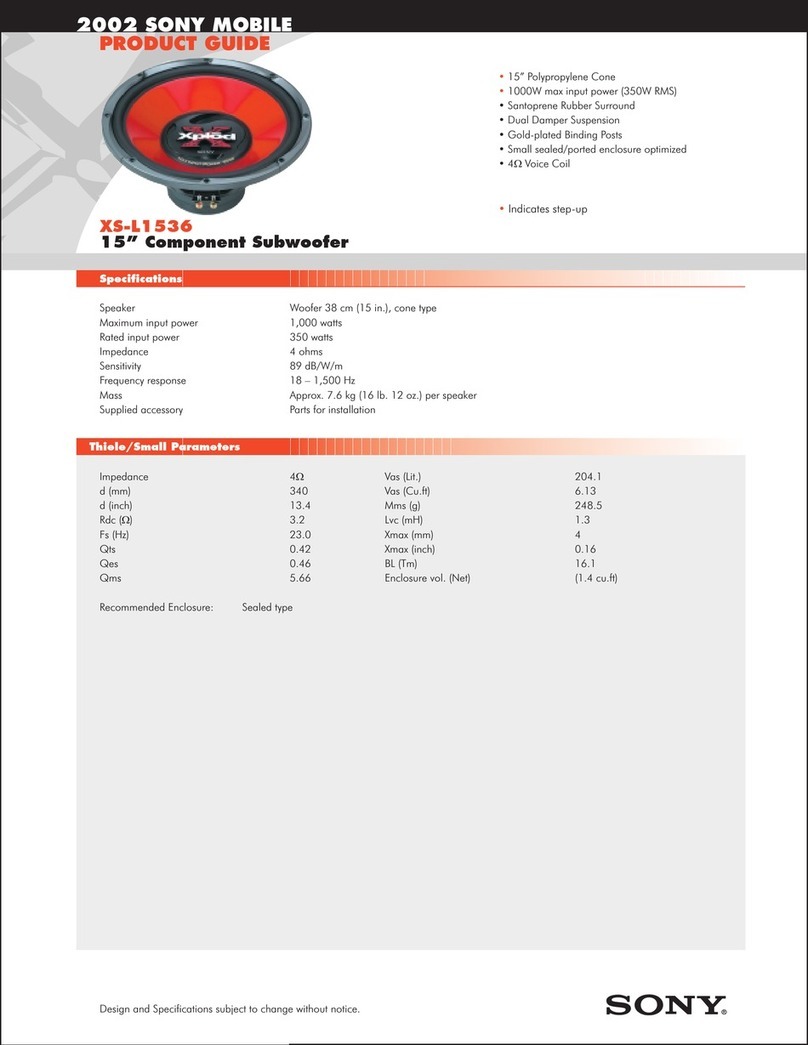
10
amplifier. The easy and foolproof connection at the REL is done with a Neutrik® Speakon®
connector. The purpose of connecting to the speaker output terminals is one of the unique secrets
of REL’s success. By connecting to the High Level input on the REL from the amplifier, you
build forward the sonic signature of your main system, including the tonal balance and timing
cues of the entire electronics chain. In this way, the REL is fed the exact signal that is fed to the
main speakers.
2 When possible, the REL should be placed in one of the corners behind the speakers.
Remember, we are dealing with true LOW bass pressurization with RELs. Low bass
pressurization below 40Hz is best derived from corner placement, where the most linear and
efficient low bass can be produced because the subwoofer is able to take advantage of the
tangential (corner-to-corner) axis which is typically the longest axis in a room.
Connecting and Setting Up
High-level connection, using the enclosed cable with the Neutrik® Speakon® connector, is
always the first choice. This connection can be made without affecting the performance of the
amplifier because the REL’s amplifier input impedance is 150,000 ohms, in effect producing NO
additional load on the rest of your system.
• The standard high-level hook up procedure is: attach the red wire to the amplifier’s right
positive speaker output terminal; attach the yellow wire to the amplifier’s left positive speaker
output terminal; attach the black wire to whichever of the amplifier’s ground output terminals is
convenient; plug the Speakon® connector into the Sub-Bass System’s high-level input.
PLACE NORMAL CONNECTION GRAPHIC HERE
• For differential (i.e. fully balanced) amplifiers using one REL, simply use the standard
connecting scheme with the exception of NOT connecting the black wire to a negative speaker
terminal. Instead, it should first be allowed to “float” or hang down without connection to ANY
terminal. Should hum occur using this method, please try connecting to an unused RCA
connector on the rear of a preamp or amplifier. Please contact your dealer should there be any
questions concerning this or any other hookup procedure.
PLACE BALANCED DIFFERENTIAL CONNECTION GRAPHIC HERE
NOTE: The Serie S models are equipped with internal circuitry to allow seamless connection to
Class-D (digital) amplifiers. If connecting to a Class-D amplifier, follow the above connection
procedure for differential amplifiers.
• If connecting RELs to Mono Bloc amplifers we strongly advocate using (2) RELs, one for each
amplifier. Connect the black wire of each REL to the negative speaker terminal of the
corresponding amplifier channel; twist together the red and yellow wires of each REL separately
and connect each pair to the positive speaker terminal of the corresponding amplifier channel. In
some instances, this will result in exceptionally high gain (output) from the RELs. If it seems
simply too high in gain, please remove either the red or yellow wire from the twisted pair. This
will reduce output by half and restore a natural dynamic. If the amplifier is of balanced
differential design, please follow the instructions in the section above labeled Differential
Connection. PLACE MONO BLOC CONNECTION GRAPHIC HERE
• If connecting a single REL as a dedicated center channel sub, please consider connecting to the
rear of the speaker, rather than routing the REL High Level cable all the way back to the
amplifier. Connect the black wire of the REL to the negative center channel speaker terminal;
twist together the red and yellow wires and connect this pair to the positive center channel
speaker terminal.
PLACE CENTER CONNECTION GRAPHIC HERE



